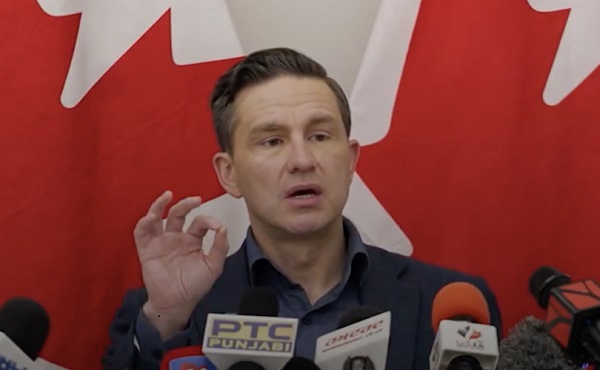Brownstone Institute
Fact-Checker, Check Thyself
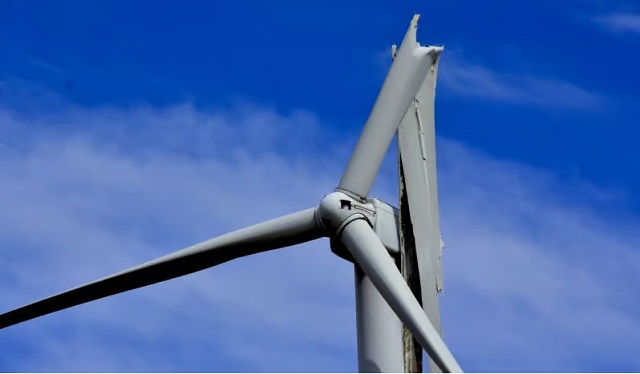
From Brownstone Institute
BY
In two articles on this site on November 13 and March 18, Andrew Lowenthal explained the intimate connections in the Virality Project between the US government, Stanford University, and Big Tech, to enforce Covid orthodoxy via the Censorship Industrial Complex. A similar collusion has operated in Australia but not, as far as we know, as an initiative of the security state.
This is the ABC RMIT Fact Check Unit. It is hosted jointly by the Royal Melbourne Institute of Technology (RMIT) that is mostly a publicly funded institution and the public broadcaster the Australian Broadcasting Corporation (ABC) that is entirely funded by the state. It describes itself rather grandiosely as a partnership that combines “academic excellence and the best of Australian journalism to inform the public through an independent non-partisan voice.” This boast has helped to provide plausible cover for enforcing the orthodoxy of the medical establishment that suffers from the delusion that it is the single source of medical scientific truth.
The self-important pretentiousness was punctured this week. During a radio interview with 2GB host Ben Fordham on March 18, businessman Dick Smith said, “No country has ever been able to run entirely on renewables – that’s impossible.” He said this in the context of advocating for nuclear power to be added to Australia’s energy mix.
The Fact Check
ABC RMIT Fact Check promptly investigated this and adjudged that “experts consulted by RMIT ABC Fact Check suggested Mr Smith’s statement doesn’t hold up.”
In a follow-up interview on 2GB on March 25, Smith was angry. “The whole document is full of misinformation and lies, it’s designed to discredit me. Absolutely disgusting,” he told Fordham. He demanded immediate corrections from the taxpayer-funded broadcaster’s fact-check unit and threatened defamation action otherwise as the verdict was damaging his credibility.
US columnist Michael Shellenberger, who played a central role in breaking the Twitter Files story, said:
The Australian government is demanding that X, Facebook, and other social media companies censor content that its fact-checkers say is inaccurate. But now, one of the government’s main fact-checker groups has been caught spreading misinformation about renewables and nuclear.
X owner billionaire Elon Musk joined in, posting that “Having government ‘fact-checkers’ is a giant leap in the direction of tyranny!”
Bizarrely, to support its negative verdict on Smith, the fact check quoted Stanford University’s Professor Mark Jacobson to the effect that California had “been running on more than 100 per cent WWS [wind-water-solar] for 10 out of the last 11 days for between 0.25 and 6 hours per day.” Similarly, the fact check cited a forecast from the Australian Energy Market Operator that renewables will be able to meet the entire demand of the national electricity market by 2025, “albeit for short periods of time (for example, 30 minutes).”
This demonstrates gross reading comprehension problems. Or is it elementary maths? If California has been relying on renewables for between 0.25 and 6 hours per day, quite clearly that confirms Smith’s claim, for renewables could not manage power needs for between 18 to 23.75 hours per day. In addition, Smith claimed subsequently, California can draw on its own and two other states’ nuclear power as base-load backup power to renewables. Nor does a 30-minute capacity indicate the ability to meet Australia’s electricity demand 24/7 for 365 days a year.
The Proliferation of Fact-Checkers
The fact-check industry came into its own during the Covid years, gained in popularity, and proliferated in numbers of organizations and individuals. However, they typically operated with little transparency and clarity on the credentials of the fact-checkers and their qualifications to adjudicate between world-renowned experts making competing claims. After all, contestation is normal in scientific discourse. Anything that cannot be questioned but relies on authority alone is dogma, not science.
A good example of this syndrome was provided to this site on March 27 by Peter Gøtzsche, co-founder of the Cochrane Collaboration and Professor of Clinical Research Design and Analysis at the University of Copenhagen, who has published more than 97 papers in the “big five” medical journals (JAMA [Journal of the American Medical Association], Lancet, New England Journal of Medicine, British Medical Journal, and Annals of Internal Medicine).
Gøtzsche had produced a video of a conversation he had with Professor Christine Stabell Benn, “one of the most outstanding vaccine researchers in the world.” On their own Broken Medical Science site, the video (published last October) is described thus:
In this episode, Peter C Gøtzsche discusses with Professor Christine Stabell Benn the research that has shown that live, attenuated vaccines reduce total mortality by much more than their specific effects would predict; that non-live vaccines increase total mortality; that the order in which the vaccines are given is important for mortality; what the harms are of the Covid-19 vaccines; and why they are overused.
After reading Martin Kulldorff’s story in the City Journal on March 11 of how he was fired by Harvard University, Gøtzsche decided to test YouTube and put up the video on March 24. It was taken down within an hour for violating its medical misinformation policy. They appealed but having “reviewed your content carefully,” YouTube “confirmed that it violates our medical misinformation policy.” Gøtzsche was very impressed that YouTube fact-checkers were able to conduct a careful and thorough review of a 54-minute conversation, involving two internationally eminent medical experts, in less than an hour.
Is it any wonder that fact-checkers were quickly discredited for several reasons. They took official claims by governments and the WHO as authoritative and true. This produced some hilarious flip-flops as the narrative on Covid changed with respect, for example, to the likely origins of the coronavirus in Wuhan’s wet market or the research laboratory in the Wuhan Institute of Virology located just a few kilometres away. Also with respect to claims that the vaccines stop infection, transmission, and death.
Second, fact-checkers were shown to have a pronounced left-liberal bias. Third, their modus operandi turned out to be to ask different experts for their reactions to the claims under investigation and then side with the experts who aligned with their own bias. Fourth and most importantly, when challenged in court Facebook’s defence in December 2021 was that fact-check pronouncements were protected “opinions” under the First Amendment.
Thorsteinn Siglaugsson was wickedly accurate in sketching the typology of fact-checking techniques. Create a straw-man argument that can be easily knocked down. Assert that a claim is not supported by evidence, is questioned by other experts, lacks context, is misleading, or is only partly true, etc. Engage in ad hominem attacks against the person rather than with their evidence and argument.
ABC RMIT Fact Check, Check Your Own Facts
Smith makes the point that the fact-checker never contacted him. He could have told them he was talking about the total energy requirements, not just electricity requirements. Professor Jacobson told Fact Check that four countries draw 100 percent of their electricity power requirements solely from renewables: Albania, Bhutan, Paraguay, and Nepal.
The first thing to note is that even the electricity consumption per capita of the four countries is substantially lower than that of Australia as an advanced industrial economy (Figure 1).
Second, none of the four countries is an island continent without the option of connecting to a geographically wider energy grid to make up for shortfalls in national energy needs. In 2021, 24.1 percent of Albania’s, 27.6 percent of Nepal’s, and 10.1 percent of Paraguay’s energy needs were met from imports.

Third, according to Our World in Data, the share of electricity production from renewables for Paraguay was 99.88 percent in 2021, and for the remaining three was 100 percent. But power for the electricity grid made up only 22, 41, 13, and 38 percent of the total energy consumption of Albania, Bhutan, Nepal, and Paraguay, respectively.

Figure 2 shows the energy mix of three countries using data from the International Energy Agency (Bhutan’s is not available from that source).
Nepal
I’d like to look in more detail at Nepal, for a simple reason. I was born and grew up in the state of Bihar just 20-30km from the border with Nepal which is an open border for citizens of the two countries. Consequently I am intimately familiar with life and communities on both sides of the border. Like people in northern Bihar, many Nepalese lack access to electricity and rely heavily on wood, agricultural waste, and dung with high CO2 emissions for their daily cooking and heating needs.
Similarly, on both sides of the border fossil fuels power the majority of transportation and diesel generators are commonly used as a power source to offset unreliable grid electricity supply. Speaking of which, a common complaint from local Indians is that Nepal imports a lot of the electricity produced in India even though India’s own power requirements are not fully met.
In other words, the ABC RMIT Fact Check conclusions were misleading, lacked context, and made false claims about what Dick Smith had said in his interview. Good to see that despite repeated insistence that it was standing by its work, late on March 26 the Fact Check unit apologized to Smith and amended its report.
But this does rather beg the question. Having stood by their verdict for over a week, ABC buckled upon receiving a letter from Smith’s lawyers. He is both a public figure with access to media and politicians and very wealthy. The founder of the successful Australia-New Zealand retail chain Dick Smith Electronics, his state honour includes the highest level of civilian recognition, the Companion of the Order of Australia (AC), awarded in 2015. Ninety-nine percent of Australians lack his reach and ability to issue credible legal threats and risk penury. Consequently his win is unlikely, on its own, to end the ABC’s attitude problem rooted in arrogance, hubris, and complacency.
An earlier version of this was published in The Epoch Times Australia on March 27.
Brownstone Institute
If the President in the White House can’t make changes, who’s in charge?

From the Brownstone Institute
By
Who Controls the Administrative State?
President Trump on March 20, 2025, ordered the following: “The Secretary of Education shall, to the maximum extent appropriate and permitted by law, take all necessary steps to facilitate the closure of the Department of Education.”
That is interesting language: to “take all necessary steps to facilitate the closure” is not the same as closing it. And what is “permitted by law” is precisely what is in dispute.
It is meant to feel like abolition, and the media reported it as such, but it is not even close. This is not Trump’s fault. The supposed authoritarian has his hands tied in many directions, even over agencies he supposedly controls, the actions of which he must ultimately bear responsibility.
The Department of Education is an executive agency, created by Congress in 1979. Trump wants it gone forever. So do his voters. Can he do that? No but can he destaff the place and scatter its functions? No one knows for sure. Who decides? Presumably the highest court, eventually.
How this is decided – whether the president is actually in charge or really just a symbolic figure like the King of Sweden – affects not just this one destructive agency but hundreds more. Indeed, the fate of the whole of freedom and functioning of constitutional republics may depend on the answer.
All burning questions of politics today turn on who or what is in charge of the administrative state. No one knows the answer and this is for a reason. The main functioning of the modern state falls to a beast that does not exist in the Constitution.
The public mind has never had great love for bureaucracies. Consistent with Max Weber’s worry, they have put society in an impenetrable “iron cage” built of bloodless rationalism, needling edicts, corporatist corruption, and never-ending empire-building checked by neither budgetary restraint nor plebiscite.
Today’s full consciousness of the authority and ubiquity of the administrative state is rather new. The term itself is a mouthful and doesn’t come close to describing the breadth and depth of the problem, including its root systems and retail branches. The new awareness is that neither the people nor their elected representatives are really in charge of the regime under which we live, which betrays the whole political promise of the Enlightenment.
This dawning awareness is probably 100 years late. The machinery of what is popularly known as the “deep state” – I’ve argued there are deep, middle, and shallow layers – has been growing in the US since the inception of the civil service in 1883 and thoroughly entrenched over two world wars and countless crises at home and abroad.
The edifice of compulsion and control is indescribably huge. No one can agree precisely on how many agencies there are or how many people work for them, much less how many institutions and individuals work on contract for them, either directly or indirectly. And that is just the public face; the subterranean branch is far more elusive.
The revolt against them all came with the Covid controls, when everyone was surrounded on all sides by forces outside our purview and about which the politicians knew not much at all. Then those same institutional forces appear to be involved in overturning the rule of a very popular politician whom they tried to stop from gaining a second term.
The combination of this series of outrages – what Jefferson in his Declaration called “a long train of abuses and usurpations, pursuing invariably the same Object” – has led to a torrent of awareness. This has translated into political action.
A distinguishing mark of Trump’s second term has been an optically concerted effort, at least initially, to take control of and then curb administrative state power, more so than any executive in living memory. At every step in these efforts, there has been some barrier, even many on all sides.
There are at least 100 legal challenges making their way through courts. District judges are striking down Trump’s ability to fire workers, redirect funding, curb responsibilities, and otherwise change the way they do business.
Even the signature early achievement of DOGE – the shuttering of USAID – has been stopped by a judge with an attempt to reverse it. A judge has even dared tell the Trump administration who it can and cannot hire at USAID.
Not a day goes by when the New York Times does not manufacture some maudlin defense of the put-upon minions of the tax-funded managerial class. In this worldview, the agencies are always right, whereas any elected or appointed person seeking to rein them in or terminate them is attacking the public interest.
After all, as it turns out, legacy media and the administrative state have worked together for at least a century to cobble together what was conventionally called “the news.” Where would the NYT or the whole legacy media otherwise be?
So ferocious has been the pushback against even the paltry successes and often cosmetic reforms of MAGA/MAHA/DOGE that vigilantes have engaged in terrorism against Teslas and their owners. Not even returning astronauts from being “lost in space” has redeemed Elon Musk from the wrath of the ruling class. Hating him and his companies is the “new thing” for NPCs, on a long list that began with masks, shots, supporting Ukraine, and surgical rights for gender dysphoria.
What is really at stake, more so than any issue in American life (and this applies to states around the world) – far more than any ideological battles over left and right, red and blue, or race and class – is the status, power, and security of the administrative state itself and all its works.
We claim to support democracy yet all the while, empires of command-and-control have arisen among us. The victims have only one mechanism available to fight back: the vote. Can that work? We do not yet know. This question will likely be decided by the highest court.
All of which is awkward. It is impossible to get around this US government organizational chart. All but a handful of agencies live under the category of the executive branch. Article 2, Section 1, says: “The executive Power shall be vested in a President of the United States of America.”

Does the president control the whole of the executive branch in a meaningful way? One would think so. It’s impossible to understand how it could be otherwise. The chief executive is…the chief executive. He is held responsible for what these agencies do – we certainly blasted away at the Trump administration in the first term for everything that happened under his watch. In that case, and if the buck really does stop at the Oval Office desk, the president must have some modicum of control beyond the ability to tag a marionette to get the best parking spot at the agency.
What is the alternative to presidential oversight and management of the agencies listed in this branch of government? They run themselves? That claim means nothing in practice.
For an agency to be deemed “independent” turns out to mean codependency with the industries regulated, subsidized, penalized, or otherwise impacted by its operations. HUD does housing development, FDA does pharmaceuticals, DOA does farming, DOL does unions, DOE does oil and turbines, DOD does tanks and bombs, FAA does airlines, and so on It goes forever.
That’s what “independence” means in practice: total acquiescence to industrial cartels, trade groups, and behind-the-scenes systems of payola, blackmail, and graft, while the powerless among the people live with the results. This much we have learned and cannot unlearn.
That is precisely the problem that cries out for a solution. The solution of elections seems reasonable only if the people we elected actually have the authority over the thing they seek to reform.
There are criticisms of the idea of executive control of executive agencies, which is really nothing other than the system the Founders established.
First, conceding more power to the president raises fears that he will behave like a dictator, a fear that is legitimate. Partisan supporters of Trump won’t be happy when the precedent is cited to reverse Trump’s political priorities and the agencies turn on red-state voters in revenge.
That problem is solved by dismantling agency power itself, which, interestingly, is mostly what Trump’s executive orders have sought to achieve and which the courts and media have worked to stop.
Second, one worries about the return of the “spoils system,” the supposedly corrupt system by which the president hands out favors to friends in the form of emoluments, a practice the establishment of the civil service was supposed to stop.
In reality, the new system of the early 20th century fixed nothing but only added another layer, a permanent ruling class to participate more fully in a new type of spoils system that operated now under the cloak of science and efficiency.
Honestly, can we really compare the petty thievery of Tammany Hall to the global depredations of USAID?
Third, it is said that presidential control of agencies threatens to erode checks and balances. The obvious response is the organizational chart above. That happened long ago as Congress created and funded agency after agency from the Wilson to the Biden administration, all under executive control.
Congress perhaps wanted the administrative state to be an unannounced and unaccountable fourth branch, but nothing in the founding documents created or imagined such a thing.
If you are worried about being dominated and destroyed by a ravenous beast, the best approach is not to adopt one, feed it to adulthood, train it to attack and eat people, and then unleash it.
The Covid years taught us to fear the power of the agencies and those who control them not just nationally but globally. The question now is two-fold: what can be done about it and how to get from here to there?
Trump’s executive order on the Department of Education illustrates the point precisely. His administration is so uncertain of what it does and can control, even of agencies that are wholly executive agencies, listed clearly under the heading of executive agencies, that it has to dodge and weave practical and legal barriers and land mines, even in its own supposed executive pronouncements, even to urge what might amount to be minor reforms.
Whoever is in charge of such a system, it is clearly not the people.
Brownstone Institute
The New Enthusiasm for Slaughter
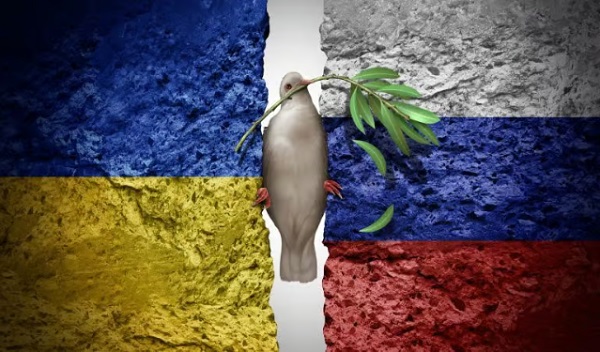
From the Brownstone Institute
By
What War Means
My mother once told me how my father still woke up screaming in the night years after I was born, decades after the Second World War (WWII) ended. I had not known – probably like most children of those who fought. For him, it was visions of his friends going down in burning aircraft – other bombers of his squadron off north Australia – and to be helpless, watching, as they burnt and fell. Few born after that war could really appreciate what their fathers, and mothers, went through.
Early in the movie Saving Private Ryan, there is an extended D-Day scene of the front doors of the landing craft opening on the Normandy beaches, and all those inside being torn apart by bullets. It happens to one landing craft after another. Bankers, teachers, students, and farmers being ripped in pieces and their guts spilling out whilst they, still alive, call for help that cannot come. That is what happens when a machine gun opens up through the open door of a landing craft, or an armored personnel carrier, of a group sent to secure a tree line.
It is what a lot of politicians are calling for now.
People with shares in the arms industry become a little richer every time one of those shells is fired and has to be replaced. They gain financially, and often politically, from bodies being ripped open. This is what we call war. It is increasingly popular as a political strategy, though generally for others and the children of others.
Of course, the effects of war go beyond the dismembering and lonely death of many of those fighting. Massacres of civilians and rape of women can become common, as brutality enables humans to be seen as unwanted objects. If all this sounds abstract, apply it to your loved ones and think what that would mean.
I believe there can be just wars, and this is not a discussion about the evil of war, or who is right or wrong in current wars. Just a recognition that war is something worth avoiding, despite its apparent popularity amongst many leaders and our media.
The EU Reverses Its Focus
When the Brexit vote determined that Britain would leave the European Union (EU), I, like many, despaired. We should learn from history, and the EU’s existence had coincided with the longest period of peace between Western European States in well over 2,000 years.
Leaving the EU seemed to be risking this success. Surely, it is better to work together, to talk and cooperate with old enemies, in a constructive way? The media, and the political left, center, and much of the right seemed at that time, all of nine years ago, to agree. Or so the story went.
We now face a new reality as the EU leadership scrambles to justify continuing a war. Not only continuing, but they had been staunchly refusing to even countenance discussion on ending the killing. It has taken a new regime from across the ocean, a subject of European mockery, to do that.
In Europe, and in parts of American politics, something is going on that is very different from the question of whether current wars are just or unjust. It is an apparent belief that advocacy for continued war is virtuous. Talking to leaders of an opposing country in a war that is killing Europeans by the tens of thousands has been seen as traitorous. Those proposing to view the issues from both sides are somehow “far right.”
The EU, once intended as an instrument to end war, now has a European rearmament strategy. The irony seems lost on both its leaders and its media. Arguments such as “peace through strength” are pathetic when accompanied by censorship, propaganda, and a refusal to talk.
As US Vice-President JD Vance recently asked European leaders, what values are they actually defending?
Europe’s Need for Outside Help
A lack of experience of war does not seem sufficient to explain the current enthusiasm to continue them. Architects of WWII in Europe had certainly experienced the carnage of the First World War. Apart from the financial incentives that human slaughter can bring, there are also political ideologies that enable the mass death of others to be turned into an abstract and even positive idea.
Those dying must be seen to be from a different class, of different intelligence, or otherwise justifiable fodder to feed the cause of the Rules-Based Order or whatever other slogan can distinguish an ‘us’ from a ‘them’…While the current incarnation seems more of a class thing than a geographical or nationalistic one, European history is ripe with variations of both.
Europe appears to be back where it used to be, the aristocracy burning the serfs when not visiting each other’s clubs. Shallow thinking has the day, and the media have adapted themselves accordingly. Democracy means ensuring that only the right people get into power.
Dismembered European corpses and terrorized children are just part of maintaining this ideological purity. War is acceptable once more. Let’s hope such leaders and ideologies can be sidelined by those beyond Europe who are willing to give peace a chance.
There is no virtue in the promotion of mass death. Europe, with its leadership, will benefit from outside help and basic education. It would benefit even further from leadership that values the lives of its people.
-
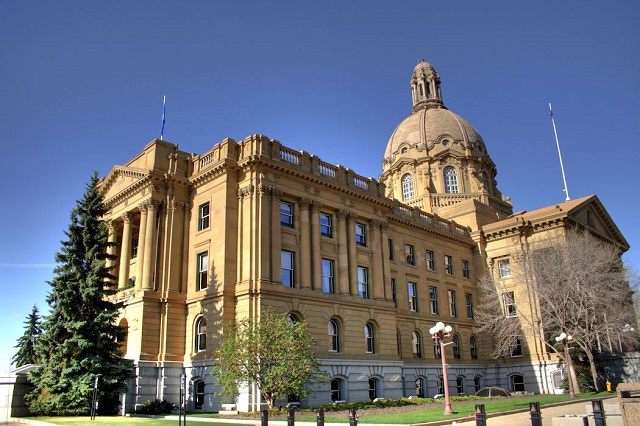
 Alberta1 day ago
Alberta1 day agoAlberta Institute urging Premier Smith to follow Saskatchewan and drop Industrial Carbon Tax
-

 Addictions1 day ago
Addictions1 day agoShould fentanyl dealers face manslaughter charges for fatal overdoses?
-

 2025 Federal Election2 days ago
2025 Federal Election2 days agoFool Me Once: The Cost of Carney–Trudeau Tax Games
-
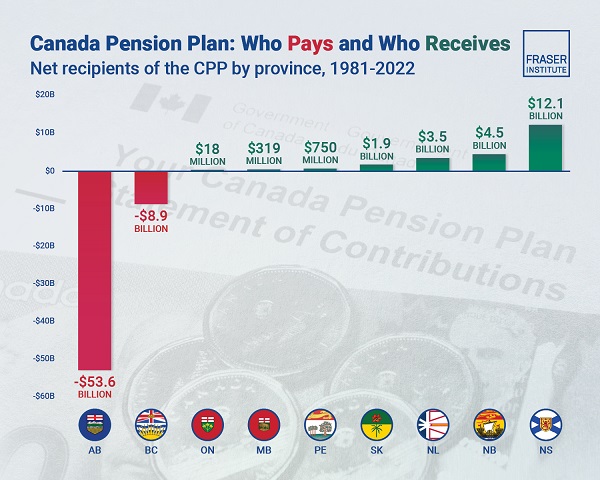
 Alberta1 day ago
Alberta1 day agoAlbertans have contributed $53.6 billion to the retirement of Canadians in other provinces
-
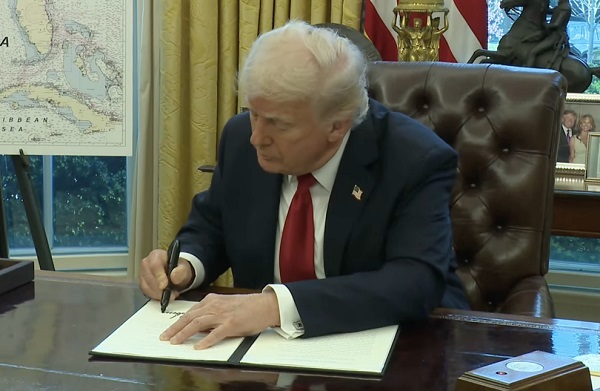
 Automotive2 days ago
Automotive2 days agoTrump announces 25% tariff on foreign automobiles as reciprocal tariffs loom
-

 2025 Federal Election1 day ago
2025 Federal Election1 day agoChinese Gangs Dominate Canada: Why Will Voters Give Liberals Another Term?
-

 Energy1 day ago
Energy1 day agoEnergy, climate, and economics — A smarter path for Canada
-

 Also Interesting22 hours ago
Also Interesting22 hours agoThe bizarre story of Taro Tsujimoto








